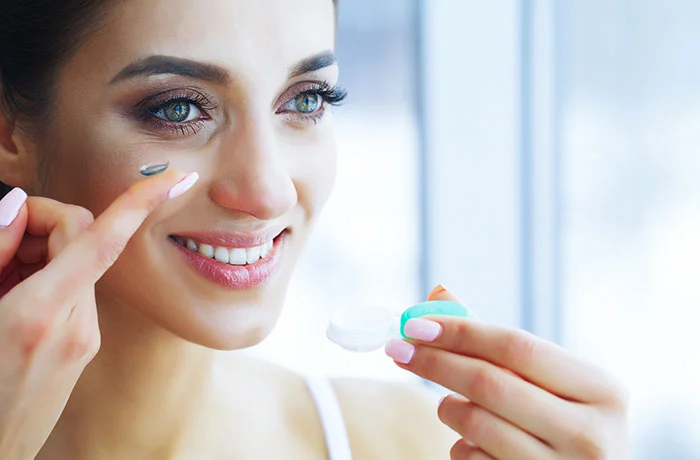No one wants an eye infection from contacts. If you’ve ever slept in your contact lenses, worn disposable lenses past the prescribed replacement schedule, or gone for a dip in the community pool without removing contacts from your eyes first, it’s time to rethink your habits.
Why? Because poor choices can lead to serious infections (like a contact lens eye infection, ouch!) in some cases, says optometrist Reecha Kampani, OD.
About 80% to 90% of contact lens-related eye infections are bacterial. Many involve a common and tough-to-treat bacteria known as staphylococcus aureus.
But the most severe may be pseudomonas aeruginosa, a fast-growing bacterial infection that can lead to a hole in your cornea. Unfortunately, patients who get this infection have a high chance of permanent scarring and vision loss.
Beyond bacteria, fungal infections such as aspergillus or fusariam are also potentially threats to your vision. Sometimes they are caused by trauma to the eye, but poor contact lens hygiene can lead to these fungal infections, too.
The good news: You can usually avoid these health problems (and contact lens infection) by knowing what to watch for and by practicing good habits.
Signs of an eye infection include red, painful eyes, watering or discharge, light sensitivity, blurred vision or the sensation that a foreign body is in your eye.
These can come from bacteria in your eye from your contacts.
If you have these symptoms, get checked out by a doctor immediately. Your vision is too important to risk long-term damage from an infection.
Whenever she fits patients for contact lenses, Dr. Kampani shares the rule of the three “S’s”: don’t sleep, swim or shower in your lenses.
The second two “S’s” apply to water. Water may contain pathogens or pollutants that cause the infections outlined above, so be careful not to get any in your eye — especially while wearing contacts.
Swimming presents specific problems. Pools, lakes and even hot tubs may harbor bacteria and microbes that can produce a serious infection, such as acanthamoeba keratitis, which is caused by a free-swimming amoeba.










